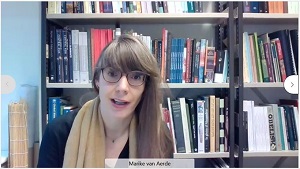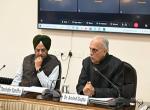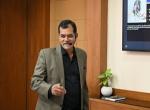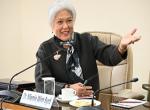On 19th January 2022 Vivekananda International Foundation (VIF) hosted Dr. Marike van Aerde for a talk on ancient trade connectivity and the integral role played by the Indian Subcontinent in these exchanges. The Director, Dr. Arvind Gupta’s opening remarks gave a brief introduction to Dr. Marike van Aerde and stressed the importance of archaeological knowledge to gather the facts about ancient India.
Dr. van Aerde is an Assistant Professor at World Archaeology, Leiden University and specializes in trade networks and connectivity between the Indian Subcontinent and East Africa up to the mid- 1st millennium century. This interest stemmed from her Doctoral track where she was working on Egypt and encountered a lot of trade interactions with the subcontinent. Her research project Routes of Exchange, Roots of Connectivity, focuses on multiregional sites and datasets across the Indian Ocean region. Her publications include studies of Indian Ocean trade networks, ancient Egyptian, Aksumite and Indian ports, and the documentation and preservation of rock art from the Karakorum Himalaya Mountains, where she coordinates ongoing fieldwork.
Dr. van Aerde started the talk by explaining how her project focuses on several aspects while trying to reconstruct the trade routes connecting the Indian Subcontinent with East Africa. These aspects include connecting all the sites and looking at the archaeological data as a whole, which in turn could shed light on new areas of interest. This investigation is therefore only possible through collaboration between various institutions which span multiple nations, for optimum results. Studies focussing on the Indian Ocean trade usually have a lot of focus on the Roman aspects of it. This focus misleads people to believe that the Romans brought trade to India when in fact the subcontinent was participating in active trade well before the emergence of Romans in India. Dr. van Aerde gave various examples throughout the talk which goes on to show the importance of the subcontinent in not only the Indian Ocean trade but also trade exchanges taking place through the land routes in the Himalayas.
During the talk Dr. van Aerde presented three case studies which focussed on several different aspects; Maritime trade routes, trade objects (beads) and Land trade routes (Himalayas). The case study for the maritime trade routes started with giving a background of the western scholarship’s focus on these trade activities from the Roman perspectives and the need for a shift in this particular narrative. Some of the sites mentioned in the case study are Arikamedu (Tamil Nadu) and Berenike (Egypt), the abundance evidence of trade activities found from these sites could be seen through pottery finds. These finds are now studied through looking at the mineral composition of the soil which was used to make the pottery which in turn could reveal the provenance of the pottery. Several examples were presented with pottery found on the African coast with Brahmi inscriptions; some were even of the Arabian origin with Brahmi inscriptions. Along with that evidence of some Aksumite pottery (kingdom centered in modern day Ethiopia, Eritrea and eastern Sudan from 1st century CE to 9th century CE) was also found from some Indian ports (Kamrej, Gujarat). This goes on to show that the process of trade is much more fluid and the objects change hands over multiple different regions.
Dr. van Aerde further mentioned several textual sources such as Arthashastra (3rd century BCE), which was indeed a proof of trade being an integral part of the economy from the Mauryan times. It was also mentioned how trade was also being used as way of diplomacy and to avoid conflict in the Mauryan times. Along with this the Ashokan rock edicts were also mentioned which talk about good ties with the Seleucid and the Parthian Empires respectively. This was followed by the mention of some patron portraits near Taxila in the Swat Valley. These portraits are part of one single stupa and show the diversity of the people who came together at these crossroads for trade interactions. A co-relation between Buddhism and trade was briefly mentioned.
Moving onto some of the types of objects being traded, Dr. van Aerde used the case study of beads. Several examples of the types of beads which were being traded were mentioned. These beads were majorly exported from Sri Lanka and the southern regions of the Indian Subcontinent. These beads were found from as far as Mozambique in the Eastern coast of Africa. This was followed by the land routes in the Himalayas in the northern part of the Indian Subcontinent. These routes are being tracked by the members of the project through the rock carvings in the Karakoram Ranges. A lot of these carvings depict Buddhism but some traces of Hindu rock carvings were also found. This brought back up the connection between trade and Buddhism which is an aspect they are researching in the project. After documenting these rock carvings, the pattern distribution of these carving was studied which lead to discovery of some new sites with unrecorded rock carvings.
Dr. van Aerde concluded the talk by presenting some rock carvings found in the caves of Socotra (an island on the coast of the Republic of Yemen). These rock carvings are very similar to those found in the Karakoram Ranges. This was presented to emphasize the importance of connecting all these sites together rather than studying them just as individual sites.
The Director gave his concluding remarks and thanked the speaker for the talk and sharing an abundant number of facts about the role of the Indian Subcontinent in the ancient trade networks and then he went on to open the floor for discussion.










Post new comment